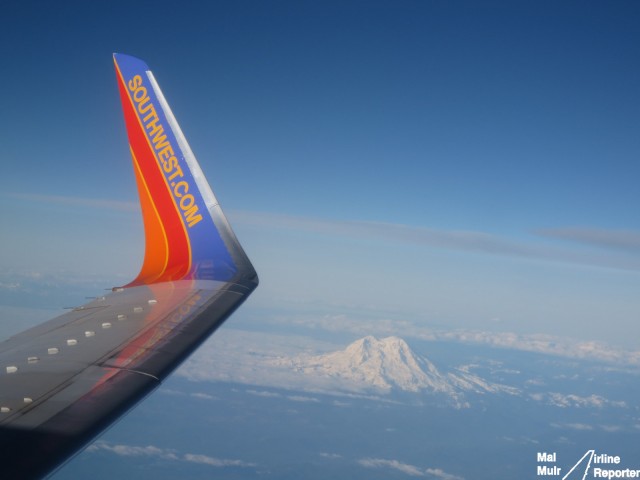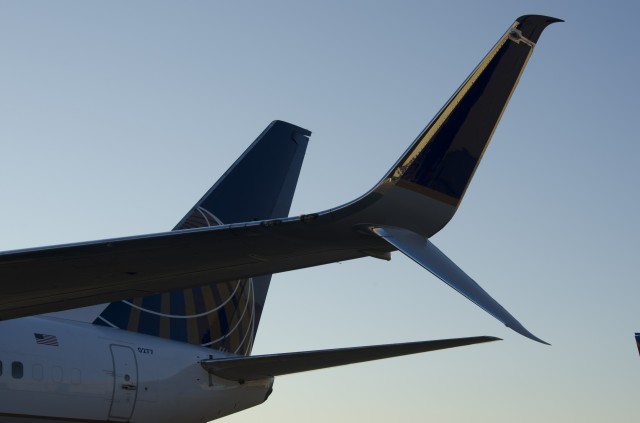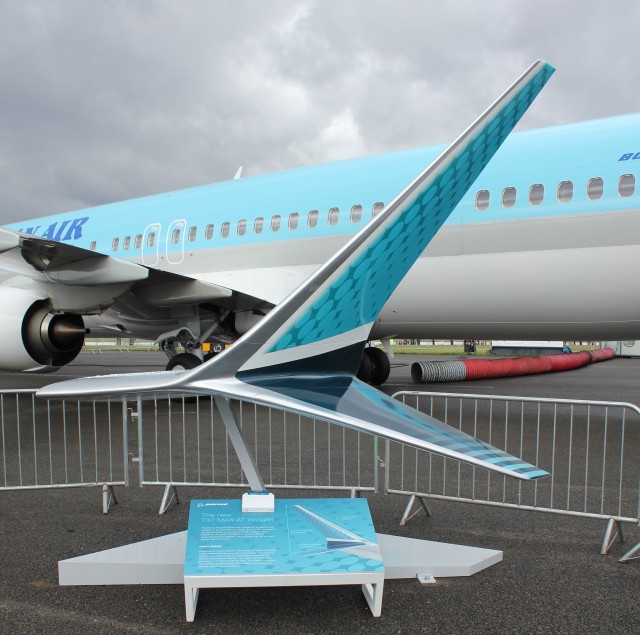
What better photo than a winglet & Pacific Northwest icon Mt. Rainier?
During the recent Aviation Geek Fest, a reader of AirlineReporter suggested that I do a bit of a roundup of all the different ’œwinglets’ that are out in the aviation world (I wish I remembered you name). With so many different kinds of wingtip devices out in the marketplace, there needs to be a handy guide as to what they all are and what aircraft they belong to. But first maybe a little bit of background on what a winglet actually does.
In the late 1970’s, NASA engineer Richard T. Whitcomb took some research from the 1950’s and further developed what we know as the winglet. NASA wanted to see what would happen if they were to create a wingtip device that, with the correct angle and shape, could help reduce drag and increase lift, and also help break up the wingtip vortices.
Getting these benefits from the wing helps make flying easier and increases fuel efficiency – something that back in the 70’s wasn’t as crucial as it is now. How much fuel can you save by adding a winglet? On average, a 737 can save around 4% when compared to a non-winglet version. A winglet is really designed to save money when flying long distances at high altitudes, so long flights are where the most savings are realized.

A Close up look at the new Scimitar Winglet – Photo: United Airlines
On Tuesday the 16th July 2013, a new type of winglet took to the skies for the first time. Forget about the blended winglet or even the sharklet, the new kid in town is the Scimitar Winglet. This new winglet is similar to the Advance Technology Winglet that is destined for Boeing’s new 737 Max aircraft, but is built for the 737NG instead.
The first flight was operated by a United 737-800 (aircraft N37277) and was conducted at Paine Field (KPAE) in Everett. Many of the test flights out of KPAE are operated by Boeing at the north-end of the airport, but this flight was completed at the south-end via Aviation Partners Boeing where the aircraft was retrofitted with the new Scimitar Winglet.

The new Advance Technology Winglet that will go on the Boeing 737 MAX.
There are tons of eye candy here at the Farnborough Airshow and I will be sharing more of it soon. For now, I wanted to show off the new Advanced Technology Winglet for the Boeing 737 MAX in the flesh. The thing is huge and looks quite impressive in person.
The new winglet is 9′ 7″ tall and extends about 4′ out from the wing. This is done on purpose, since it increases the effective span of the wing. The new winglet increases the lift of the 737, without adding weight,making it more efficient.
With four additional feet on each side of the 737, this could cause some issues with manufacturing at the Boeing Renton plant, where the NG’s are currently made. Boeing tells me that this is not currently a concern, since they plan to build the MAX on an additional line and will have room for the additional size of the winglet.
As I stated previously, I am not a big fan of the boring name for the winglet, but I am a fan on how it looks. And really, an airline isn’t going to be choosing the new 737 MAX for the look or name of the winglet, but more for the 1.5% increase of fuel efficiency.
Words of Note: For those of you fans who read Jon Ostrower’s Flight Blogger site, the “Photo of Note” statement might look familiar. I have always loved his usage of that statement. Now that he doesn’t use it anymore after moving to the Wall Street Journal, I received permission to use the terminology — thanks Jon!


